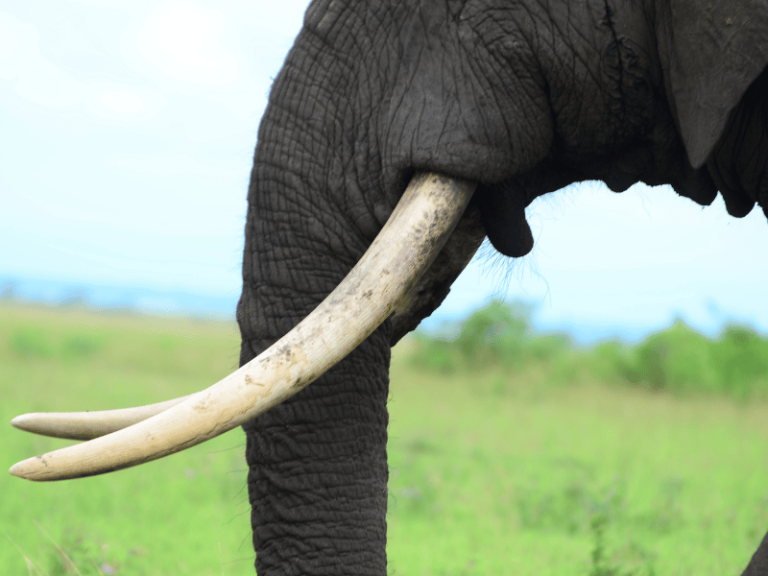The tusks of elephants are actually their incisor teeth, which continue to grow even after they mature, extending out to become tusks. Elephants only have these incisors in their upper jaw, not in the lower jaw. African elephants have particularly long tusks, and both males and females possess them. The tusks of Indian elephants are not as large as those of African elephants; especially in female Indian elephants, the tusks are much smaller.
The long tusks of elephants have evolved as a result of long-term adaptation to their environment. Elephants use their tusks as weapons for fighting, to break tree trunks, dig up roots, or to open the shells of fruits to get at the kernels inside. When walking, they often use their tusks to probe the ground to determine if it can support their weight, preventing them from sinking. Over time, their tusks have grown very long.
The elongation of the elephant’s trunk also has a developmental history. The ancestors of elephants had short and thick heads with long and heavy tusks. Such heavy heads made it difficult for them to lower their heads and inconvenient to turn them sideways. Additionally, due to the enormous size of the elephant’s body, their limbs became like four thick pillars. However, these thick limbs were not very flexible. To compensate for these many inconveniences, the trunk had to elongate, becoming a versatile tool controlled by muscle contractions, serving the functions of a hand, lip, and nose to meet the needs of their lifestyle. However, the elephant’s trunk did not start out this way from their ancestors. Originally, elephants were not as large as they are now. Due to the suitable living environment and the necessity to resist external enemies, their bodies gradually grew larger and taller, increasing the distance between their mouths and the ground. Being herbivores, the greater the distance between their mouths and the ground, the harder it was for them to feed. To adapt to this environment and survive, the upper lip of the elephant gradually elongated over time, followed by the elongation of the trunk. This adaptation allowed them to feed and perform essential activities effectively. If we closely observe the tip of an elephant’s trunk now, we can find a finger-like projection on the lower part of the tip, which is a trace of the upper lip. This is the origin of the elephant’s long trunk.

